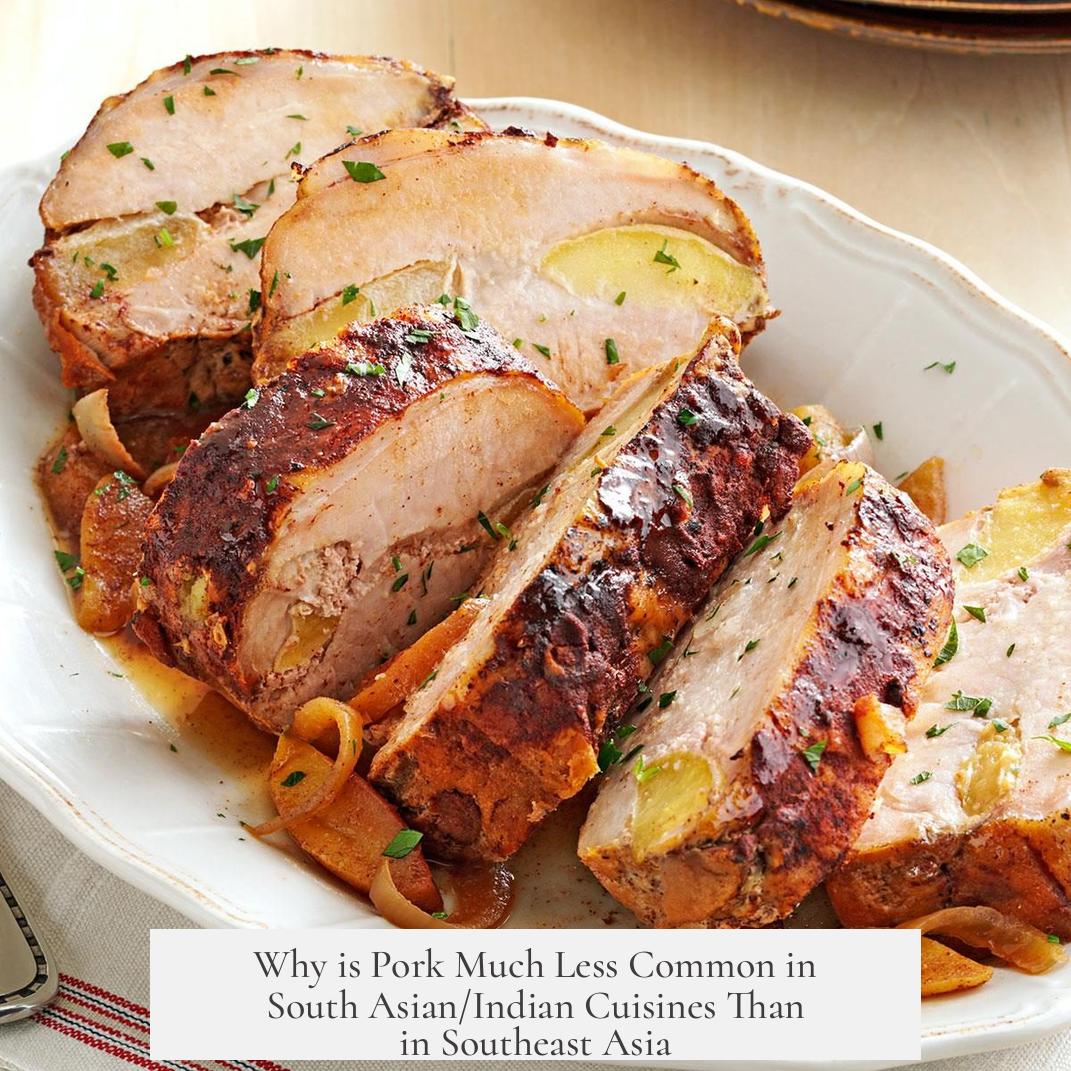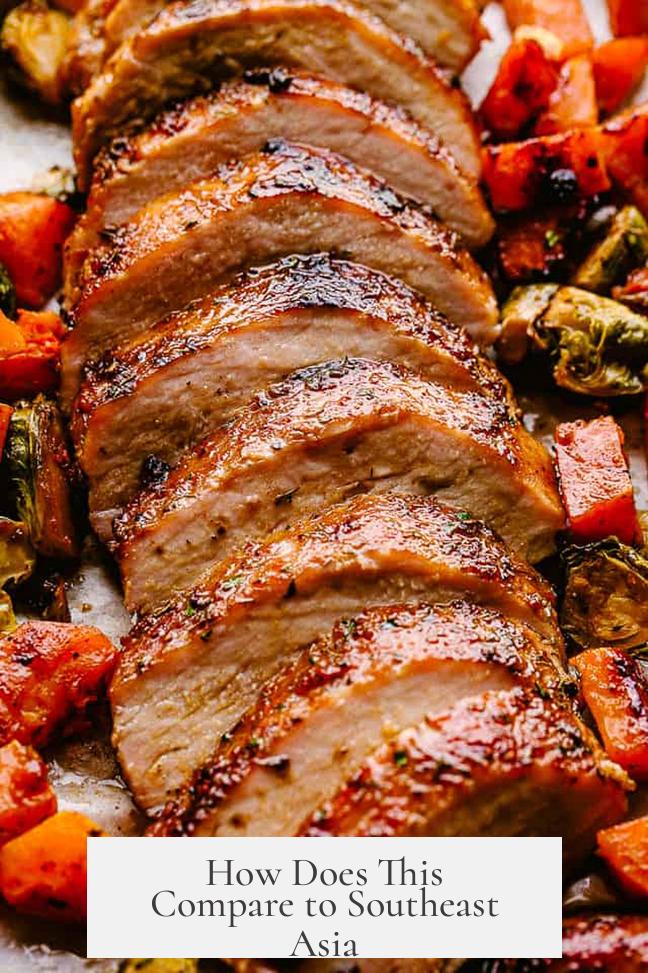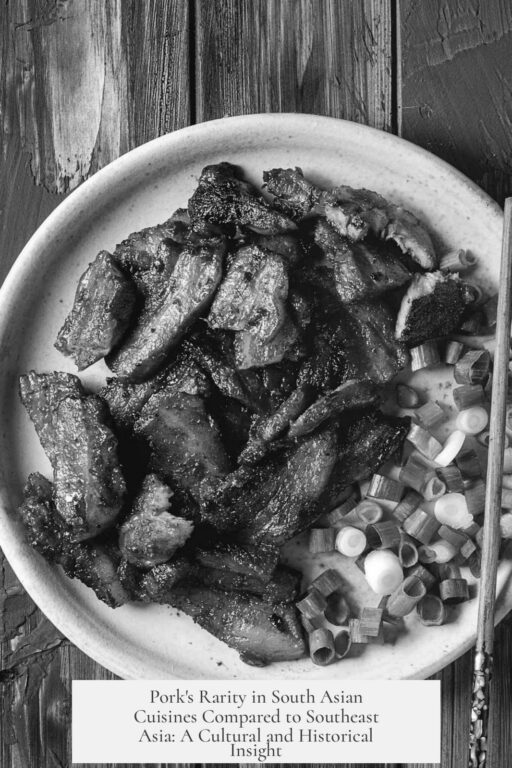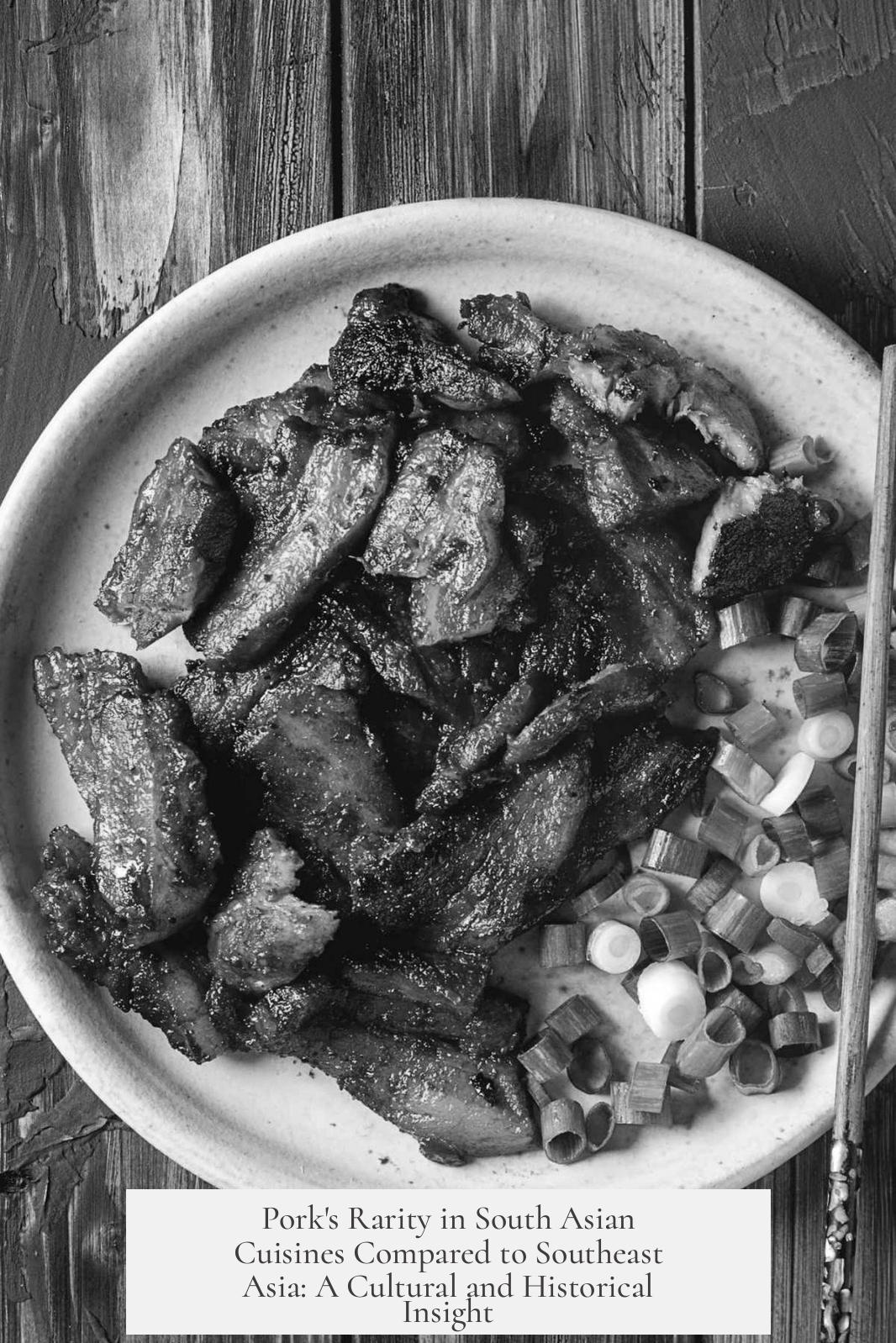pork is much less common in South Asian and Indian cuisines than in Southeast Asia due to a mix of religious, cultural, and historical factors. The primary reason involves religious beliefs influencing dietary habits across India. Hinduism promotes vegetarianism to a significant extent, with about 30% of the population strictly vegetarian and another 40% largely vegetarian with occasional meat consumption. Within this context, pork is largely avoided.
Muslim dietary laws prohibit pork consumption entirely. Since roughly half of India’s meat-eating population is Muslim and they forbid pork, this reduces demand and farming of pigs. Historically, North Indian regions governed by Muslim rulers discouraged pig farming and pork eating, strengthening this dietary pattern over centuries.
Pork consumption in India remains low overall at only about 5.3% of meat consumption, compared to chicken at 36.6% and buffalo at 23.3%. Goa and Kerala have small pockets of higher pork usage, linked to Christian communities, since Christianity does not prohibit pork, unlike Islam and Hinduism. Tribal and lower-caste Hindu groups in states like Bihar and Jharkhand consume pork more frequently, demonstrating socio-economic ties to pork use.
The patterns contrast sharply with Southeast Asia, where pork forms a staple part of diets due to fewer religious restrictions and different cultural backgrounds. Southeast Asian countries often have large Buddhist or animist populations with no explicit bans on pork, allowing pigs to be raised widely and consumed regularly.
In summary, India’s complex interplay of religion and history has shaped preferences against pork in favor of other meats like chicken and mutton. The Muslim prohibition combined with Hindu vegetarian ethics limits pork’s role in Indian cuisine. Southeast Asia’s distinct social and religious landscape fosters a much higher acceptance of pork as a customary food.
- Hindu vegetarianism and Muslim prohibition reduce pork demand in India.
- Historical Muslim rule discouraged pig farming, especially in northern India.
- Pork consumption is higher among lower castes, tribal groups, and Christians.
- Southeast Asia lacks these religious restrictions, promoting pork consumption.
- Indian meat consumption favors chicken, buffalo, and mutton over pork.
Why is Pork Much Less Common in South Asian/Indian Cuisines Than in Southeast Asia?

The short answer? Pork is much less common in South Asian and Indian cuisines due to a complex mix of religious taboos, cultural history, caste influences, and regional variations. These factors have shaped dietary habits over centuries, steering South Asians away from pork in striking contrast to pork’s prominence in Southeast Asia.
But let’s unpack this fascinating culinary puzzle a bit more—because the reasons go beyond simple food preferences and dive deep into history, religion, and social structure.
Meat Matters in India: A Quick Look at Consumption Patterns
First, understanding the backdrop of meat consumption in India helps. Roughly 30% of Indians are strict vegetarians. Another 30% enjoy meat regularly. The remaining 40% are mostly vegetarian but might indulge in eggs, fish, or meat on special occasions. This paints a diverse picture of dietary habits.
Among meats consumed, chicken leads the pack at 36.6%, followed by buffalo (23.3%), cattle (17.4%), goats (9.4%), pigs (just 5.3%), sheep (4.6%), and other meats making up the rest. Pigs barely make a dent compared to chicken or buffalo.
Why does pork lag behind so much? Glad you asked.
Religion Rings the Dinner Bell (or Not)
India’s intricate religious mosaic heavily influences what ends up on the plate. Hinduism, practiced by the majority, is broadly vegetarian-friendly; many Hindus avoid beef due to cows being sacred. But what about pork?
- Hindu vegetarianism doesn’t specifically outlaw pork, but cultural and caste-based factors discourage its consumption.
- Muslim influence is a major player here. Muslims, about half of the 30% meat-eating population, don’t eat pork, as it’s forbidden (haram) in Islam.
This alone accounts for a large part of pork’s uncommon status. Muslims also dominated much of North India historically, and their centuries-long rule officially discouraged pork consumption and pig farming in these regions.
The result? Pork consumption is particularly low in North India, precisely where Muslim presence was longest and most influential.
History and Caste: The Social Seasoning Behind Pork’s Limited Appeal
An intriguing layer to this story is caste and regional differences. Lower-caste Hindus tend to eat more pork than higher castes. This reflects traditional dietary practices and economic constraints.
| Region/Group | Reason for Higher Pork Consumption |
|---|---|
| Bihar & Jharkhand | Lower-caste Hindus breed pigs for food. These states are economically poorer, highlighting how survival needs sometimes trump cultural norms. |
| West Bengal | Large Chinese community influences higher pork use. |
| Assam & Nagaland | Christian influence encourages pork-eating, contrasting with Hindu and Muslim dietary laws. |
| Goa & Kerala | Localized communities with Christian or tribal traditions favor pork. |
This complex patchwork explains why pork is not entirely absent but highly localized where cultural and economic factors align to favor it.
How Does This Compare to Southeast Asia?

In Southeast Asia, the landscape is dramatically different. The dominant religions (Buddhism, indigenous beliefs, and Christianity) don’t impose strong restrictions on pork. Plus, tribal traditions and agricultural practices favor pigs as a source of meat. Take the Philippines or Indonesia — pork dishes are staples, widely loved, and available.
Here, pig farming is culturally ingrained, even part of festivals and rituals. Pork doesn’t have the taboo baggage that weighs it down in South Asia.
Correlations and Context: What Do the Numbers Tell Us?
- Positive Correlations: Pork consumption rises in areas with Christian and tribal populations. It’s also higher in poorer states with larger lower-caste Hindu populations.
- Negative Correlations: It drops sharply in Muslim-majority or historically Muslim-ruled areas and in communities deeply rooted in vegetarian Hinduism.
In plain talk, if Muslim dietary laws or strict vegetarian customs dominate, pork rarely gets a second thought.
Recipes, Rituals, and Real Talk: What This Means for Cuisine
This absence of pork has shaped Indian cuisine immensely. Think of chicken tikka or goat curry instead of pork adobo or char siu, staples in Southeast Asia.
The meat-loving Indians who aren’t vegetarian prefer chicken and mutton, partly because these meats fit cultural and religious frameworks better. This is why you’ll find lavish chicken biryanis and mutton curries on Indian menus rather than pork dishes.
If you visit Bihar or Nagaland, you might encounter pork-based meals. But such regions are exceptions rather than the norm.
Wrapping It Up: A Tale of Tradition, Taste, and Taboo
South Asia’s generally low pork consumption boils down to:
- Religious proscriptions against pork, especially among Muslims.
- Vegetarian tendencies and caste-based customs within Hindu society.
- Historical influences from Muslim rulers discouraging pig farming and pork eating.
- Socio-economic dynamics favoring other livestock.
- Localized pockets where cultural and religious diversity allow pork into the diet.
Meanwhile, Southeast Asia’s pork-loving traditions thrive because of differing religious rules, agricultural systems, and cultural attitude toward pork. No wonder the pig is king there but an underdog in much of India.
Does knowing this change your view of Indian food? Or make you appreciate the diversity of culinary traditions worldwide? Food is more than taste — it’s history, religion, culture, and economics sizzling together on one plate.




